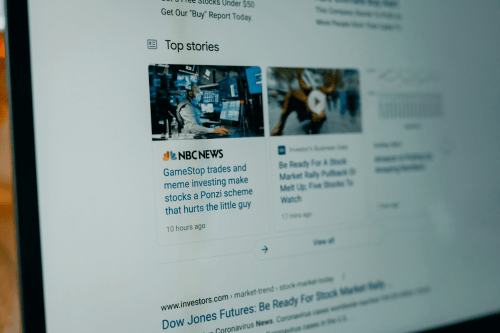All media is biased.
This does not mean that media outlets share disinformation or lies. In fact, a news source may fact check regularly and vet sources, yet still demonstrate bias in the way they characterize the facts, the narrative they create from the facts, the amount of time and space they use to cover certain pieces of information, and the decisions they make about what stories to cover.
News organizations yield immense power in deciding which stories are important enough to cover. Likewise, the public has the ability to exercise their own power in deciding which news stories they choose to engage with and share with friends and followers on their social media platforms.
Educators may be surprised when asking their students where they go to read the news. Social media and television are likely to be two popular outlets, but these sources are saturated in biases.
Media bias charts may help students determine the credibility of their news sources.
What are Media Bias Charts?
Media bias charts show the political lean and credibility of a variety of news organizations. They have been said to help “[free] people from filter bubbles,” allowing them to evaluate the information they are receiving objectively as they develop a deeper understanding of its origins.
AllSides and Ad Fontes Media, media literacy companies, have created media bias charts that are increasing in popularity. Ad Fontes Media uses paid analysts to determine where news organizations fall on the chart. AllSides Media utilizes multi-partisan, scientific analysis to determine bias ratings.
According to AllSides, bias ratings on these media bias charts “do not reflect accuracy or credibility; they reflect perspective only.”
Since media bias charts are created by humans, they, too, are biased, but that does not mean they are not useful or trustworthy. Users are urged to employ their own reasoning to determine each chart’s usefulness and trustworthiness, considering individual and group biases presented.
Using Media Bias Charts in the Classroom
Media bias charts can be utilized in the classroom as a means for students to become more critical consumers of news.
Students often gather research in a Montessori classroom, delving deeply into topics of interest. If students are unfamiliar with news sources utilized in this process, media bias charts can be introduced as a tool to help students identify inherent biases within the information they have gathered. Locating media sources on the charts or utilizing interactive media bias charts where students are able to search for specific sources allows them to gain a more complete understanding of whose message is being presented in a story and why. Students might also find it helpful to visit a local library to rely on the expertise of librarians in their area for assistance in obtaining reliable sources for research.
By using media bias charts, students will become more informed citizens empowered to employ their own judgment when consuming news in an effort to continue challenging their own biases and the biases of others.


